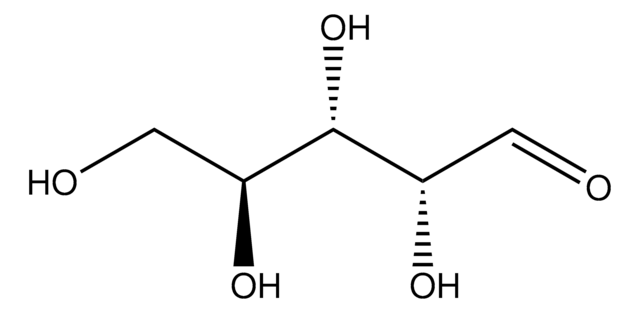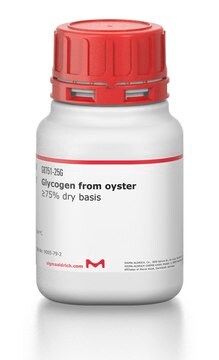76512
D-Ribulose solution
~1 M in H2O, ≥97.0% (HPLC)
Sinónimos:
D-erythro-2-Ketopentose solution, D-erythro-2-Pentulose solution, D-Adonose solution, D-Arabinulose solution, D-Araboketose solution, D-Erythropentulose solution
About This Item
Análisis
≥97.0% (HPLC)
formulario
liquid
concentración
~1 M in H2O
color
colorless
temp. de almacenamiento
2-8°C
cadena SMILES
OCC1(O)OC[C@@H](O)[C@H]1O
InChI
1S/C5H10O5/c6-2-5(9)4(8)3(7)1-10-5/h3-4,6-9H,1-2H2/t3-,4-,5?/m1/s1
Clave InChI
LQXVFWRQNMEDEE-ZZKAVYKESA-N
Acciones bioquímicas o fisiológicas
Envase
Otras notas
Código de clase de almacenamiento
10 - Combustible liquids
Clase de riesgo para el agua (WGK)
WGK 3
Punto de inflamabilidad (°F)
Not applicable
Punto de inflamabilidad (°C)
Not applicable
Certificados de análisis (COA)
Busque Certificados de análisis (COA) introduciendo el número de lote del producto. Los números de lote se encuentran en la etiqueta del producto después de las palabras «Lot» o «Batch»
¿Ya tiene este producto?
Encuentre la documentación para los productos que ha comprado recientemente en la Biblioteca de documentos.
Los clientes también vieron
Nuestro equipo de científicos tiene experiencia en todas las áreas de investigación: Ciencias de la vida, Ciencia de los materiales, Síntesis química, Cromatografía, Analítica y muchas otras.
Póngase en contacto con el Servicio técnico
